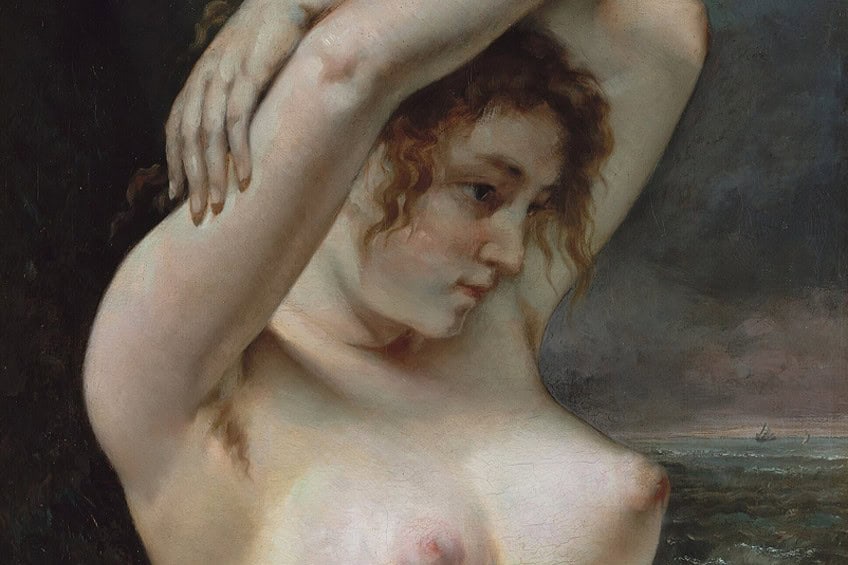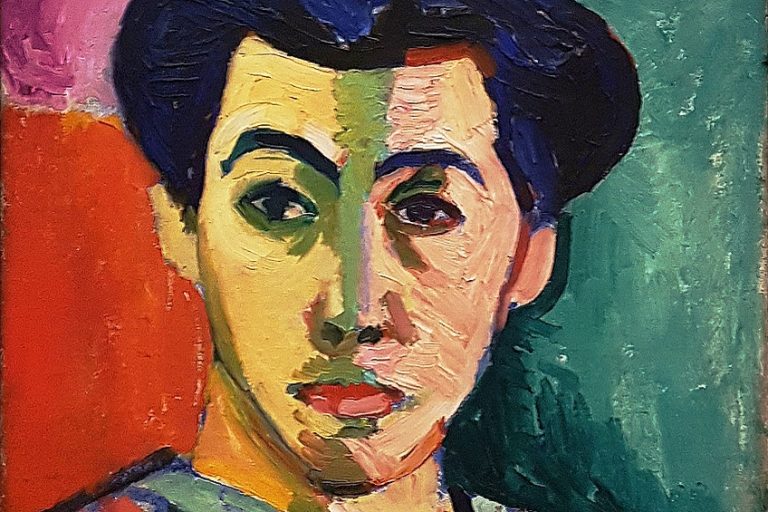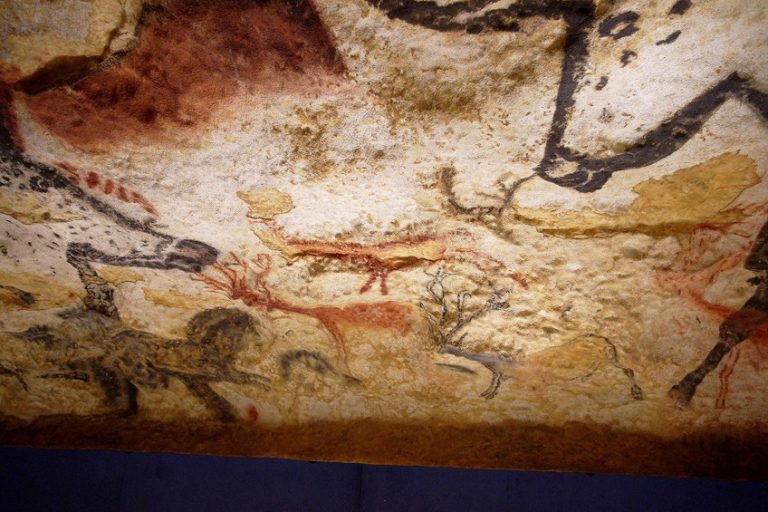“The Woman in the Waves” by Gustave Courbet – A Quick Look
The Woman in the Waves, painted by Gustave Courbet in 1868, is a masterful representation of the Realist movement, for which Courbet is renowned. This captivating oil on canvas artwork depicts a sensuous female figure emerging from the sea, her form and flesh rendered with remarkable realism and attention to detail. Courbet’s bold approach challenged conventional representations of the female nude by infusing his subject with a sense of naturalism and raw beauty. The painting exemplifies Courbet’s skill in capturing the interplay of light and water, as well as his ability to evoke a powerful emotional response through the depiction of physicality and nature. The Woman in the Waves stands as a testament to Courbet’s influence in the evolution of modern art, breaking away from idealized norms and embracing a more truthful portrayal of human experience.
Key Takeaways
- Gustave Courbet’s The Woman in the Waves is a pivotal work in Realism.
- The painting is notable for its detailed and realistic portrayal of a woman.
- It is prominently displayed at the Metropolitan Museum of Art in New York City.
Gustave Courbet and the Realist Movement
| Artist | Gustave Courbet (1819 – 1877) |
|---|---|
| Date Created | 1868 |
| Medium | Oil on canvas |
| Genre | Portrait |
| Period/Movement | Realism |
| Dimensions (cm) | 65.4 x 54 |
| Series/Versions | Single version |
| Where Is It Housed? | Metropolitan Museum of Art, New York City, United States |
| What It Is Worth | Estimated value not publicly disclosed |
Gustave Courbet, a prominent figure of the Realist movement, created The Woman in the Waves in 1868. This stunning oil on canvas painting showcases Courbet’s devotion to depicting life with unfiltered accuracy. Notably, his work stands out for its realistic portrayal of a woman’s flesh tones and the subtle hint of underarm hair, challenging conventional standards of beauty.
Courbet’s The Woman in the Waves invites viewers to appreciate the natural beauty of the female form.
The painting captures a woman partially submerged in water, with a sense of serene calm and introspection on her face. The directness of her gaze and the way Courbet meticulously renders her skin serve as a testament to his skill and dedication to Realism.
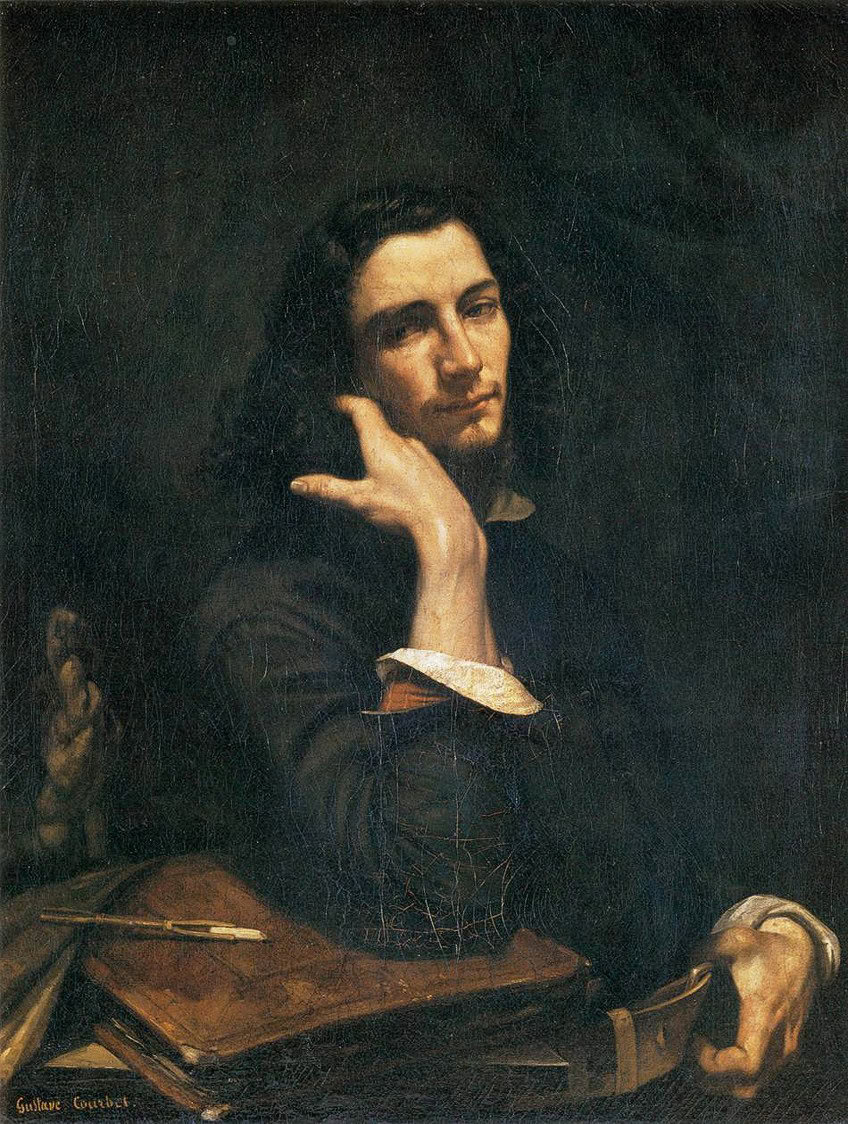
On exhibit at the Metropolitan Museum of Art in New York City, The Woman in the Waves remains an influential piece in art history. The painting’s bold approach has left a lasting legacy, challenging viewers to rethink the portrayal of the human body in art.
The Painting’s Journey
Born in Ornans, France, Gustave Courbet was a major influence in the art world. He began his journey in Paris, where he was exposed to various artistic movements. Courbet was a socialist and aimed to reflect social issues and ordinary life in his works. This approach became a cornerstone of the Realist School.
Courbet’s painting, The Woman in the Waves, is a prime example of Realism. Created in 1868, it showcases the artist’s commitment to realistic representations.
The painting features a woman with realistic flesh tones and even underarm hair, contrasting sharply with the idealized depictions of the time. It is now housed in the Metropolitan Museum of Art in New York. This piece is notable for its lifelike quality and attention to detail, hallmarks of Courbet’s realistic approach. Courbet’s work was often controversial, but it paved the way for future artists to explore new subjects and methods. His legacy in the Realist movement remains significant, influencing many artists who followed in his footsteps.
Analyzing The Woman in the Waves
Gustave Courbet’s The Woman in the Waves is an 1868 oil on canvas painting housed in the Metropolitan Museum of Art, New York. This piece exemplifies Courbet’s mastery in realism, capturing the essence of his subjects.
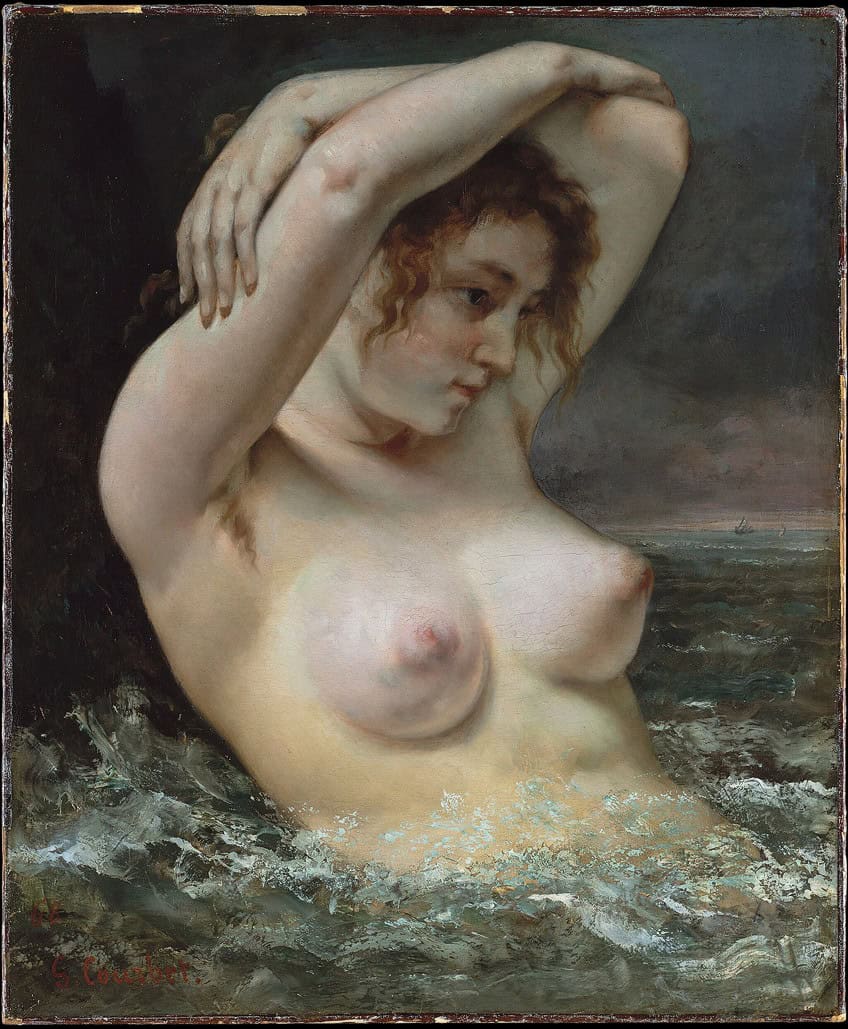
Subject Matter
The Woman in the Waves depicts a woman emerging from the sea. She looks directly at the viewer, her body half-submerged in water. This creates a sense of intimacy and immediacy. The painting highlights a naturalistic portrayal of the female form, diverging from idealized representations and instead emphasizing natural beauty.
The visible underarm hair adds to the realism, breaking away from traditional depictions of women as flawless figures.
Use of Color and Texture
Courbet’s use of color in The Woman in the Waves is notable for its earthy tones and realistic depiction of skin and water. The flesh tones are warm and lifelike, contrasting with the cooler shades of the sea. Textural contrasts are evident in the smoothness of the woman’s skin against the dappled texture of the water. The interplay of light and shadow enhances the three-dimensionality of the figure, making her appear nearly tangible.
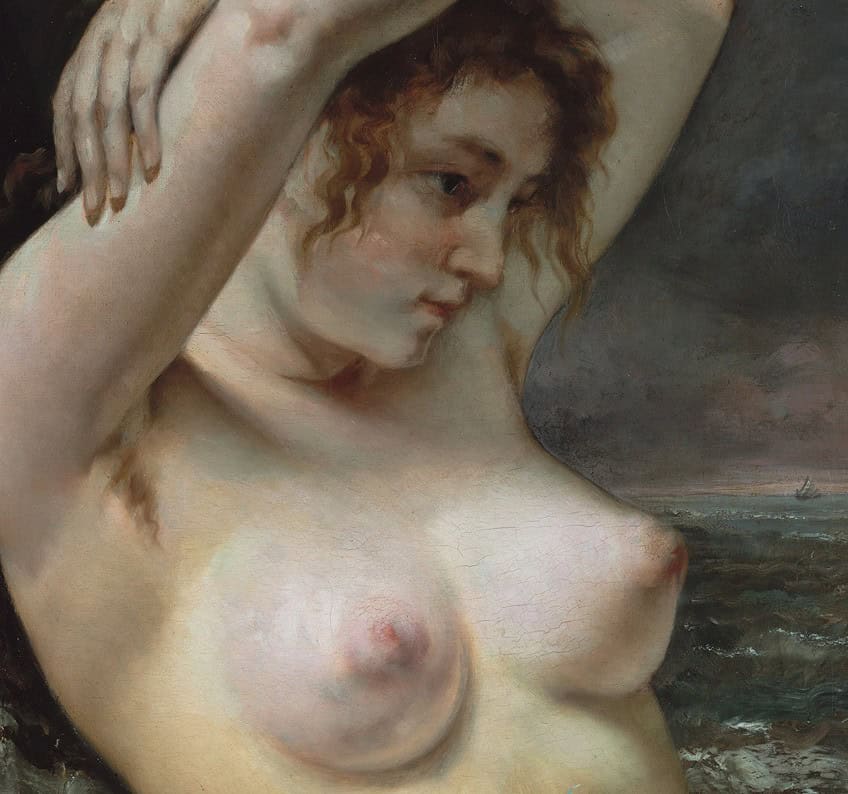
Composition and Technique
The composition centers on the woman, drawing the viewer’s eye to her form. Courbet employs a balanced arrangement, with the woman’s figure positioned slightly off-center to create a dynamic interaction with the surrounding water. His brushwork combines fine detail and broader, more expressive strokes, especially in the rendering of the sea.
This technique captures the movement and fluidity of both the figure and the water, adding a sense of vitality to the scene.
Symbolism and Interpretations
The Woman in the Waves can be interpreted through multiple lenses. One perspective views the woman as a modern Venus, rising from the sea, a nod to classical mythology. The naturalism—emphasized by details such as underarm hair—challenges traditional notions of beauty and nudity. This portrayal encourages the viewer to see the beauty in natural, unembellished human forms. The painting can also be seen as a broader statement on realism, reflecting Courbet’s commitment to depicting life truthfully, without idealization.
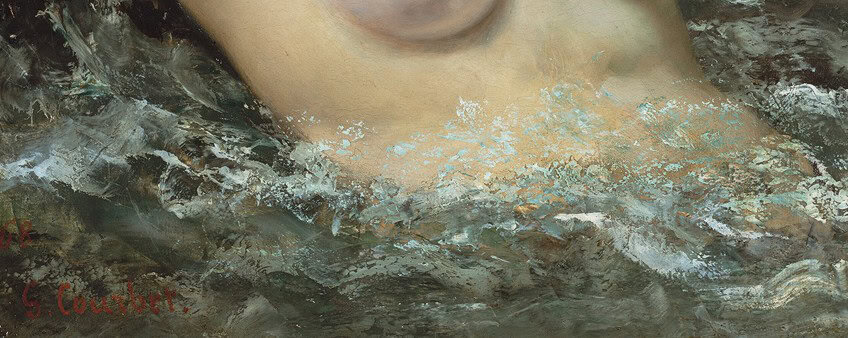
Impact and Legacy
The Woman in the Waves by Gustave Courbet has left a significant mark on the world of art. It is essential to examine its current location, Courbet’s influence on future artists, and its recognized place in art history.
Location of the Artwork
The Woman in the Waves currently resides at The Metropolitan Museum of Art in New York City, specifically in Gallery 811. The painting’s presence at a prestigious institution like The Met underscores its importance. Visitors to the museum have the opportunity to appreciate Courbet’s masterful technique and realistic portrayal. The artwork’s exhibition at such a notable venue demonstrates its lasting impact and relevance in the art community.

Courbet’s Influence on Art
Gustave Courbet was a pioneer of the Realist movement. His focus on depicting reality, often controversial and unidealized, challenged the artistic norms of his time. Courbet’s approach influenced many artists who followed, encouraging them to embrace realism and everyday subjects. Artists like Édouard Manet and even later impressionists drew inspiration from his bold style.
Courbet’s refusal to conform to the expectations of academicians and the Paris Salon paved the way for future movements and artistic freedom.
The Painting’s Place in Art History
In the context of art history, The Woman in the Waves stands out for its realistic depiction and subtle eroticism. It diverges from the idealized forms seen in works by contemporaries like Bouguereau, who painted The Birth of Venus.
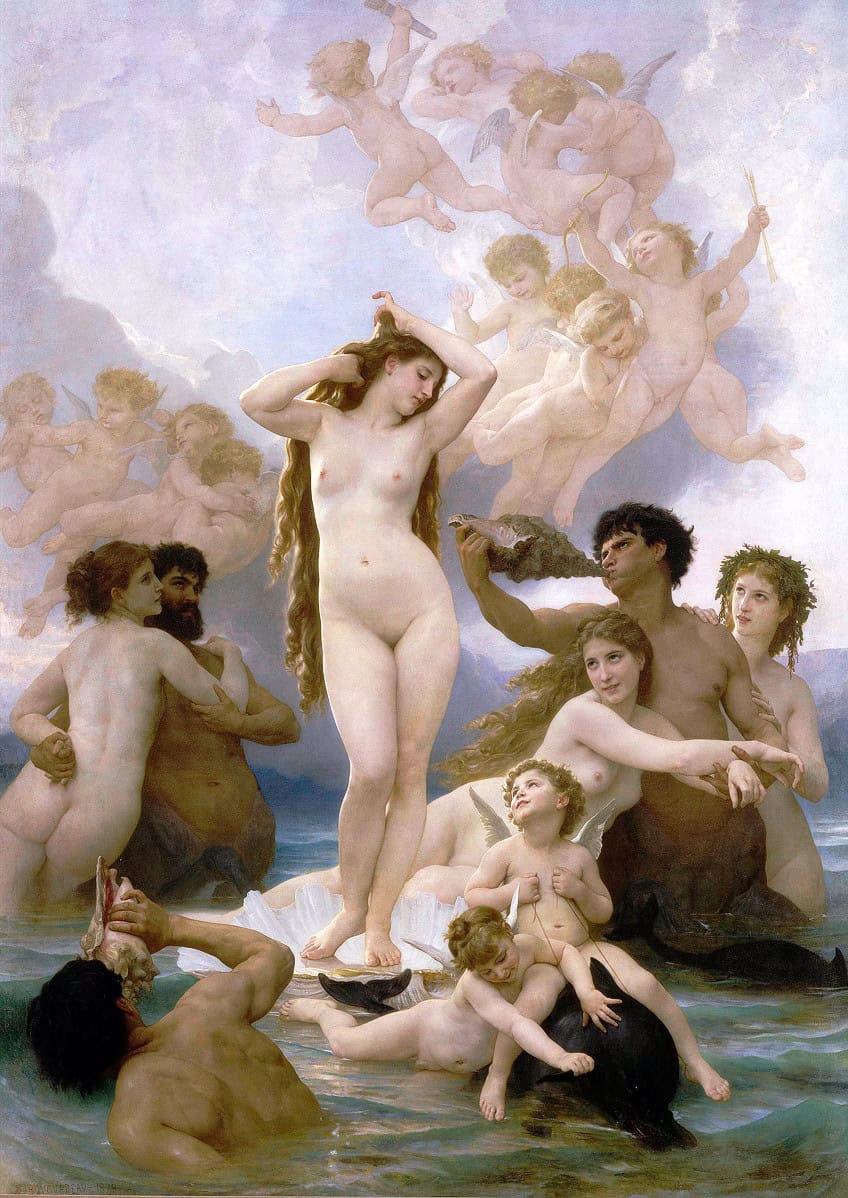
Courbet’s work attracted attention at the Paris Salon and other exhibitions, including the Exposition Universelle. Over the years, it has been studied for its innovative techniques and its challenge to traditional art forms. Today, it maintains a prominent place in discussions about the evolution of French painting and the broader artistic landscape.
Gustave Courbet’s The Woman in the Waves remains a significant work within the canon of 19th-century art, exemplifying the Realist movement’s departure from idealization towards a more truthful representation of the human form and nature. Through his meticulous brushwork and profound appreciation for natural beauty, Courbet captures a moment of serene yet powerful emergence, reflecting both physical and emotional authenticity. The painting not only highlights Courbet’s technical prowess but also his daring spirit in challenging artistic conventions. The Woman in the Waves continues to be celebrated for its innovative approach and enduring impact on the trajectory of modern art, inviting viewers to appreciate the raw, unembellished beauty of reality.
Frequently Asked Questions
How Did Gustave Courbet Contribute to the Realism Movement in Art?
Gustave Courbet was a leading figure in the Realism movement. He focused on ordinary subjects rather than idealized themes or classical mythology. Courbet’s works often depicted everyday life and common people, challenging traditional academic art norms. He aimed to portray life accurately and without romantic embellishment, which was a radical approach at the time.
How Does The Woman in the Waves Compare to Courbet’s Other Sea and Landscape Works?
The Woman in the Waves features a female figure and realistic flesh tones, typical of Courbet’s focus on naturalism. Unlike his other sea landscapes that might focus on broader views, this painting zooms in on a single figure interacting with the water. It combines Courbet’s interest in natural settings with the human form, blending his themes of realism and individual experience.
What Impact Did Gustave Courbet’s Art Have on the 19th-Century Art World?
Courbet’s art pushed against the conventions of the time, influencing many younger artists who sought more freedom in their work. His rejection of idealized beauty for raw and unfiltered reality inspired movements like Impressionism. Courbet’s boldness in subject matter and technique broke barriers, making him a pivotal figure in modern art history.
Isabella studied at the University of Cape Town in South Africa and graduated with a Bachelor of Arts majoring in English Literature & Language and Psychology. Throughout her undergraduate years, she took Art History as an additional subject and absolutely loved it. Building on from her art history knowledge that began in high school, art has always been a particular area of fascination for her. From learning about artworks previously unknown to her, or sharpening her existing understanding of specific works, the ability to continue learning within this interesting sphere excites her greatly.
Her focal points of interest in art history encompass profiling specific artists and art movements, as it is these areas where she is able to really dig deep into the rich narrative of the art world. Additionally, she particularly enjoys exploring the different artistic styles of the 20th century, as well as the important impact that female artists have had on the development of art history.
Learn more about Isabella Meyer and the Art in Context Team.
Cite this Article
Isabella, Meyer, ““The Woman in the Waves” by Gustave Courbet – A Quick Look.” Art in Context. July 5, 2024. URL: https://artincontext.org/the-woman-in-the-waves-by-gustave-courbet/
Meyer, I. (2024, 5 July). “The Woman in the Waves” by Gustave Courbet – A Quick Look. Art in Context. https://artincontext.org/the-woman-in-the-waves-by-gustave-courbet/
Meyer, Isabella. ““The Woman in the Waves” by Gustave Courbet – A Quick Look.” Art in Context, July 5, 2024. https://artincontext.org/the-woman-in-the-waves-by-gustave-courbet/.


